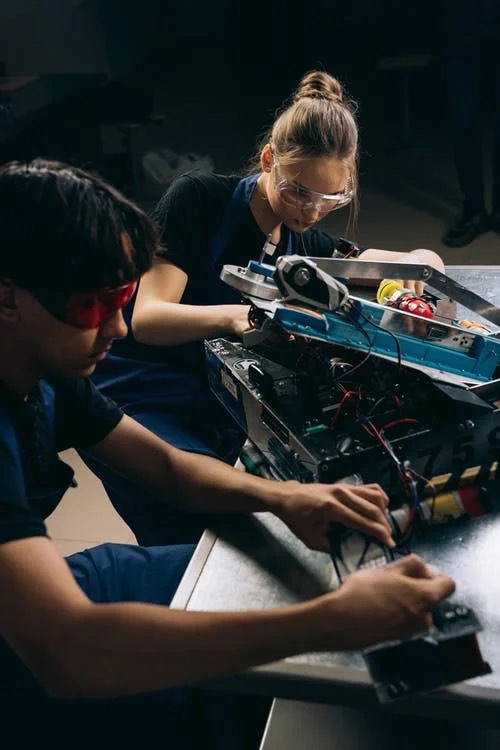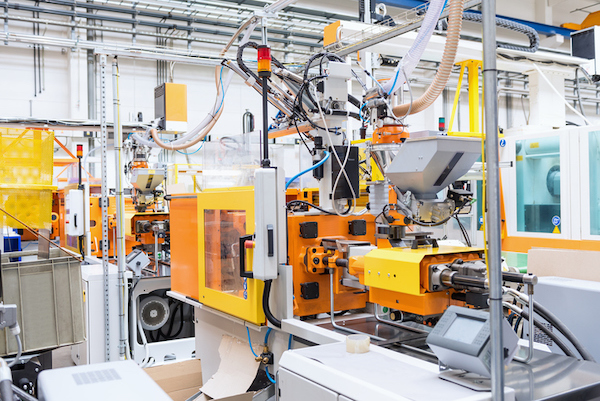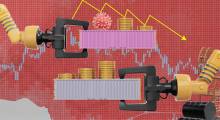The rise of robotics is ushering in more automated production. The Information Technology and Innovation Foundation has said that robots will dramatically reshape global supply chains and determine the productivity growth of multiple industries, including plastics.
Robot density, or the number of robots per 10,000 workers, is approaching 200 in the U.S., according to the International Federation of Robotics (IFR). Robot density is increasing worldwide, as increasingly sophisticated software, robots, and additive manufacturing make production quicker and more efficient.
The software development journey typically starts with the creation of the user interface portion, as outlined by Maryville University. Programmers eventually move on to craft the code that processes, analyzes, and responds to the data collected by robots and other systems.
Developers must constantly learn about specific processes to retrofit code or hardware to evolving business and market needs. For the plastics industry, integrated robots and software offer innovative solutions for manufacturing challenges.
Let's explore the many roles that robotics can play in plastics injection molding:
1. Machine tending
A common application for pick-and-place systems is the loading and unloading of products into packaging. In plastics, machine tending robots can unload finished parts from the injection-loading machine and deliver them to downstream processes.
Using pick-and-place automation, such as Cartesian robots and Delta robots, can reduce the risk of injuries to laborers, as well as improve product consistency and production capacity.
2. Insert molding
Insert molding is another task often handled by robots. Insert molding entails enclosing an “insert” such as a pin, blade, or threaded rod in molded plastic.
Machines such as four-axis SCARA robots can add inserts to moldings and load them into machines to continue the process. They can also present a complement of inserts to a three-axis or six-axis robot. These robots work with pick-and-place robots to complete the manufacturing process.

3. Applying automation to overmolding
The process of overmolding can be automated to different degrees for a more efficient and accurate arrangement of parts. Overmolding involves the removal of a molded object from one injection-molding machine and placing it into another with a robot.
Six-axis robots can reduce labor and assembly expenses in this process, helping to guarantee the final product's quality, dependability, and integrity.
4. Robots take on labeling
Another popular application for automation is in-mold labeling. This process involves embellishing plastic injection-molded parts while they are still in the injection molding cycle.
Two-axis side-entry robots and three-axis top entry robots can perform in-mold labeling. The robots would feed pre-printed labels or decorated film directly into the open plastic injection mold.
After this, labels or decorations are indefinitely encapsulated within the injection-molded components and become a crucial component in the finished product. Specially designed end-of-arm tooling (EOAT) allows for highly stable and exact positioning of labels.
5. Applications for automation in post-processing
Post-processing robots can inspect, test, and hot-stamp plastic molded parts. For example, an eight-axis robotic trimming cell provides superior repeatability compared with a human performing the same task.
Robots can also improve precision, accuracy, and cycle times, lessening waste and minimizing errors. Simply put, robots can make a big difference in cost-effectiveness and production waste while freeing workers from repetitive manual work.
Robotics has tremendous potential to change the future of business operations. The robotics market could reach $214.68 billion (U.S.) by 2030 with a compound annual growth rate (CAGR) of 22.8%, estimated Market Research Future.
As robotics becomes essential to every industry, manufacturers should consider taking advantage of automation for plastic injection-molding operations to keep up with rapidly changing market needs.

About the author
Amy Craig is a freelance technical writer with a passion for robotics. She has made it her career to research and write about the latest robotics trends across industries. In her free time, she plays online chess.
Article topics
Email Sign Up
















